Indoor rose is an attractive flower, which, if properly maintained, will become a flower grower's pride. However, in order to preserve the decorativeness that attracts and encourages you to buy such a spectacular plant, you should get acquainted with the varieties most suitable for indoor cultivation before exploring the flower shop and study the nuances of caring for the queen of flowers.
Material Content:
Varieties of roses for home growing
Seeing a rose on the windowsill, do not be mistaken that this is the fruit of the work of breeders in raising roses for rope floriculture. For indoor cultivation, garden forms with compact sizes, tea-hybrid and Bengal roses, polyanthus, and container hybrids are used.
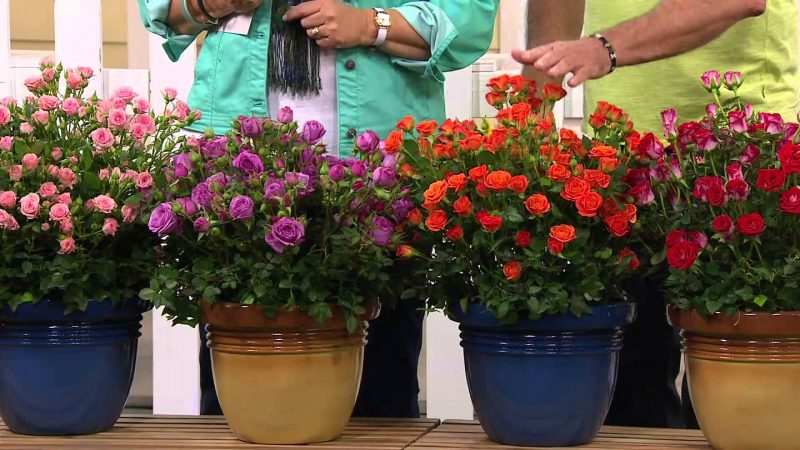
Popular varieties:
- Baby Masquerade is a compact bush formed by slightly branched shoots up to 30 cm high, which have practically no thorns. Inflorescences, consisting of 3-12 flowers, the color of which changes from lemon to reddish, stand out effectively against the background of dark green leaves with a glossy finish.
- Angela Rippon - a miniature variety represented by dense bushes with a height of up to 40 cm. It develops well in a confined space, decorating the room with many flowers with a diameter of up to 4 cm.
- Easter Morning - a variety distinguished by resistance to fungal diseases. Florists are also attracted by the decorative qualities of low bushes, consisting of densely leafy, upright shoots.Flowers of a creamy white color, exuding a subtle aroma, are collected in lush inflorescences of 20 pieces.
- Fire Princess is an attractive representative of miniature roses, attracting attention with red-orange flowers in lush inflorescences. The leaves are hard, painted in a dark green tone.
- Stars’n’Stripes is an American selection with bright pink stripes on past terry flowers. The height of branchy shoots does not exceed 50 cm.
Optimal conditions for plant maintenance
If you do not create the necessary microclimate for the rose, a lush and flowering flower can quickly wither away.
Lighting and location
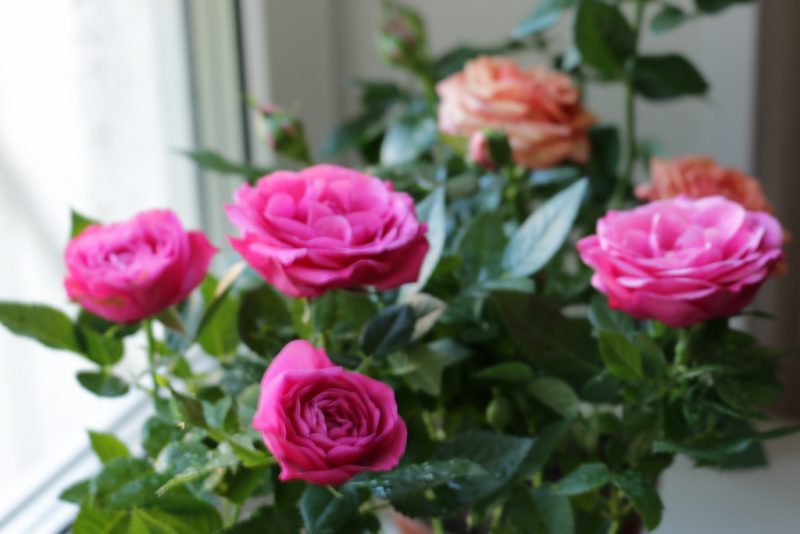
Roses need a lot of light and are not afraid of direct rays, so they can be placed near the southern windows. But not in the summer heat, when such a location can lead to overheating of the flower. After the onset of stable heat on the street, it is recommended to take the plant to fresh air, which has a beneficial effect on its decorative qualities.
Temperature
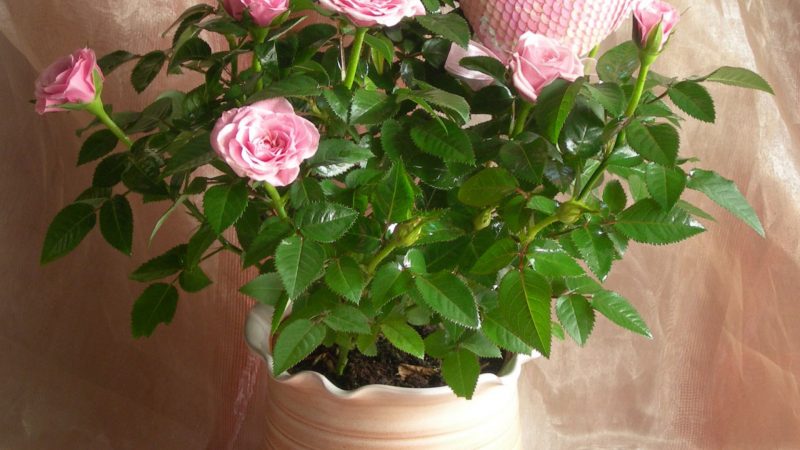
Since garden varieties are present in indoor floriculture that can tolerate even small frosts, indoor roses are more tolerant of lower temperatures than high temperatures. The optimum temperature range is 18-23 ° C.
Humidity
It is enough to spray bushes of a room rose once a week that will allow to keep purity of their leaves. In winter, when heating appliances are working, a tank with water is installed near the pot.
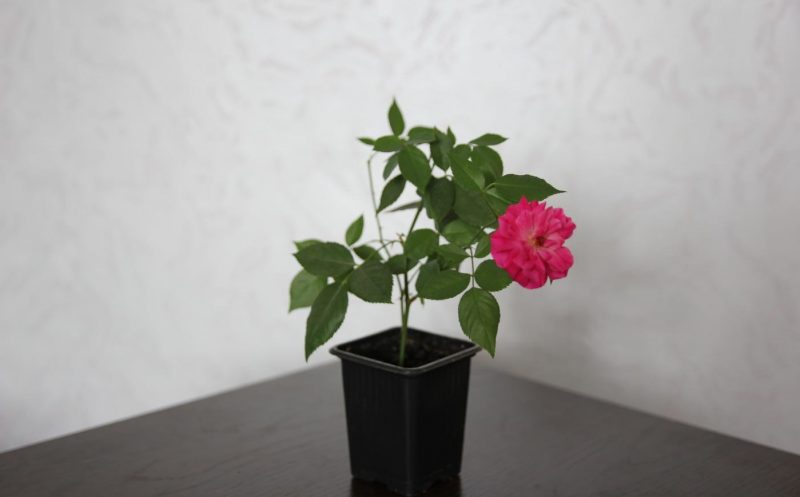
Caution! An excessively high level of humidity in the flower keeping room can lead to shoot damage by fungal diseases.
Home Flower Care
To enjoy a live bouquet of flowers on the windowsill for a long time, you need to properly care for a room rose.
Watering
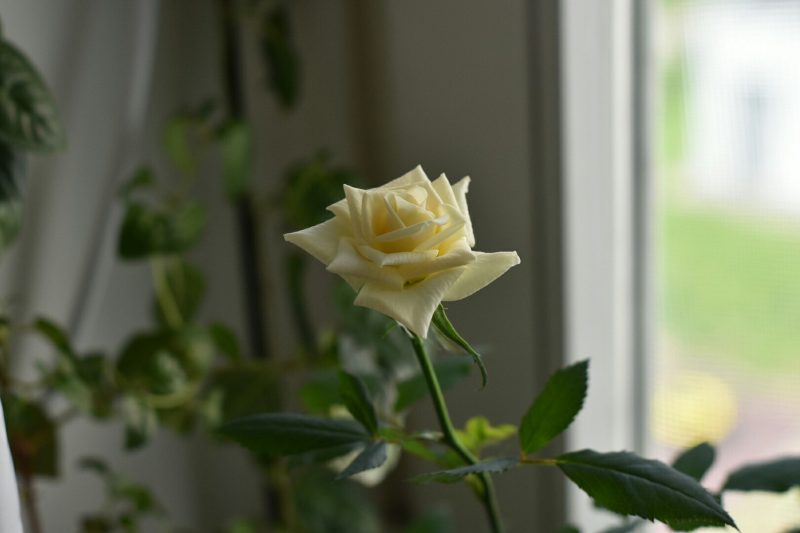
Indoor roses need regular and plentiful watering, which will protect the root system of the plant from overheating. The most suitable time for the procedure is morning or evening, when the earthen lump is moistened with warm water. When watering, avoid getting water on the leaf plates.
Fertilizing and fertilizers
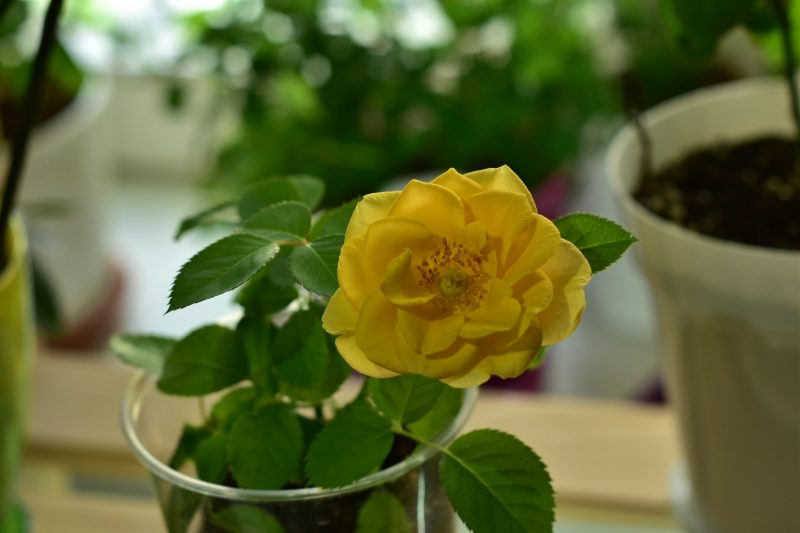
The flower responds well to organic fertilizers, which are introduced into the vegetation every two weeks. During the flowering period, the interval between dressings can be reduced to a week.
Transplanting a room rose
It is possible to transplant a room rose from a transportation container only after acclimatization of the flower to new conditions of detention. In the future, it is not recommended to carry out the procedure too often, since the root system of the plant is very fragile and reacts sharply to damage.
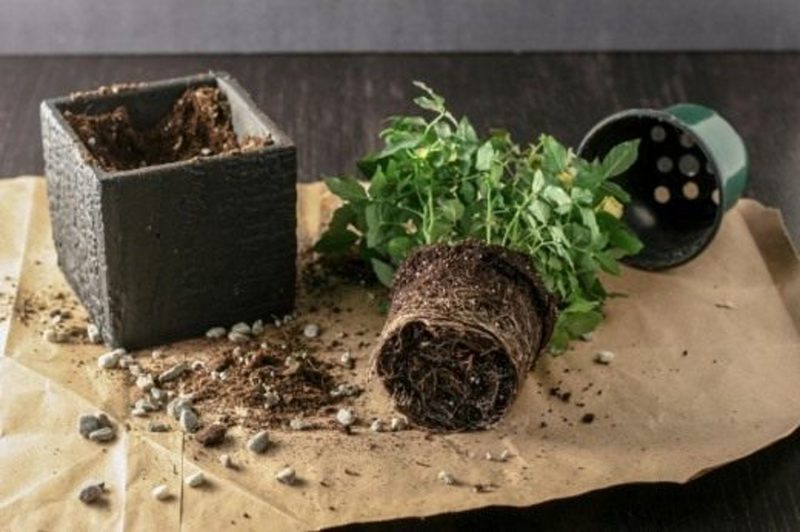
Scheme of the transplant procedure:
- A pot is selected, which in height and diameter will be slightly larger than the previous one.
- Expanded clay is placed at the bottom as a drainage layer with a thickness of 1 to 4 cm.
- From above, the drainage is sprinkled with a special substrate for roses or loose, light soil of a neutral reaction.
- A bush is removed from the old tank, which is transferred to a prepared pot.
- The remaining space is filled with a substrate so that 2 cm remains to the top edge of the pot.
Methods of propagation of flowers

Indoor roses at home, as a rule, propagate using cuttings that are rooted in water as follows:
- Before buds appear, an shoot is cut from the bush, from which cuttings are cut so that each has 3 buds.
- An oblique cut is made from the bottom side, and a straight line from the top.
- The lower leaves are removed, and the upper ones are shortened by ⅓.
- Boiled water is poured into clean dishes, which changes systematically during rooting.
- Delenki with formed roots are planted in separate containers with light soil, from which they are transplanted after a month.
Protection against diseases and pests
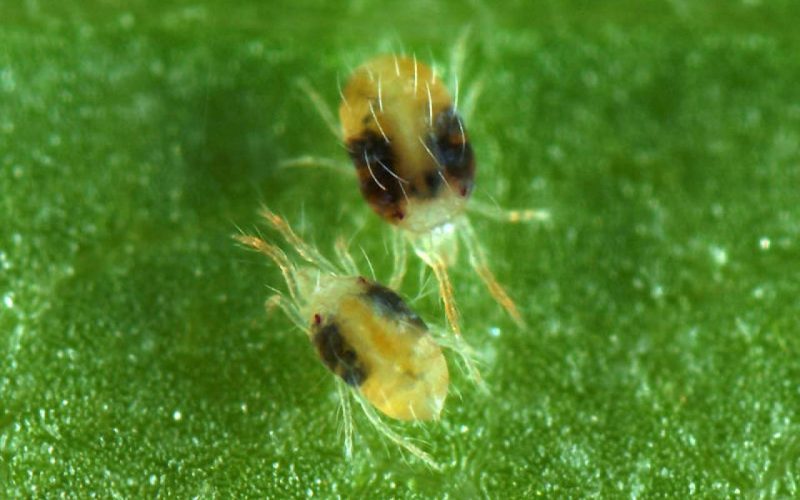
Among the most dangerous indoor flower enemies are:
- Mildew mildew is a fungal disease from which the rose suffers most often. Stimulates the development of a pathogen, increased air humidity. To protect plants from disease, you should resort to the use of fungicide according to the manufacturer's instructions.
- A spider mite is a sucking pest that populates a plant with excessively low humidity. In the fight against insects, Actellik, Fitoverm and other insecticides of a similar action have established themselves well.
Protective measures should be carried out in the fresh air with a pre-covered film with an earthen lump.
In the case of insects, the place where the pot was standing should also be sanitized in order to destroy the remaining larvae and prevent re-colonization.
Common growing problems

Growing a rose on the windowsill, you can encounter such difficulties:
- The leaves turn yellow and fall - the occurrence of a problem situation may be due to a lack of watering, excessively dry air or a deficiency of various macro- and microelements in the substrate - potassium, iron or nitrogen.
- The rose does not bloom - if the flowers do not appear for a long period of time, it is necessary to review the entire range of care measures, including the correctness of creating comfortable conditions for keeping the flower in the pot and regular feeding.
- A spider web appears on a room rose - the presence of a spider web indicates the population of the flower with a spider mite, which can destroy the plant in the absence of timely treatment.
So, if you create an appropriate microclimate for a room rose and provide comprehensive care, the plant will systematically present the grower with bright inflorescences that contrast against the background of glossy leaves.












